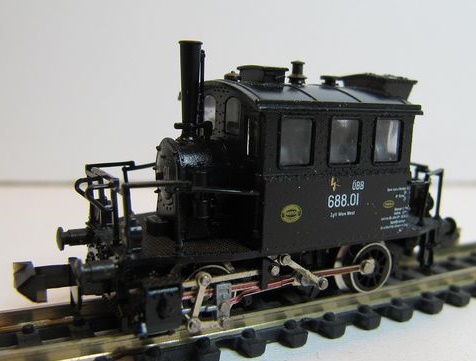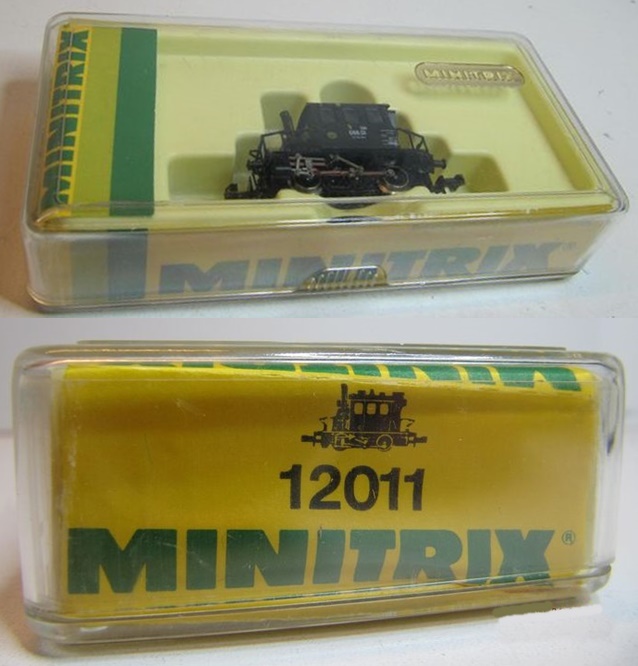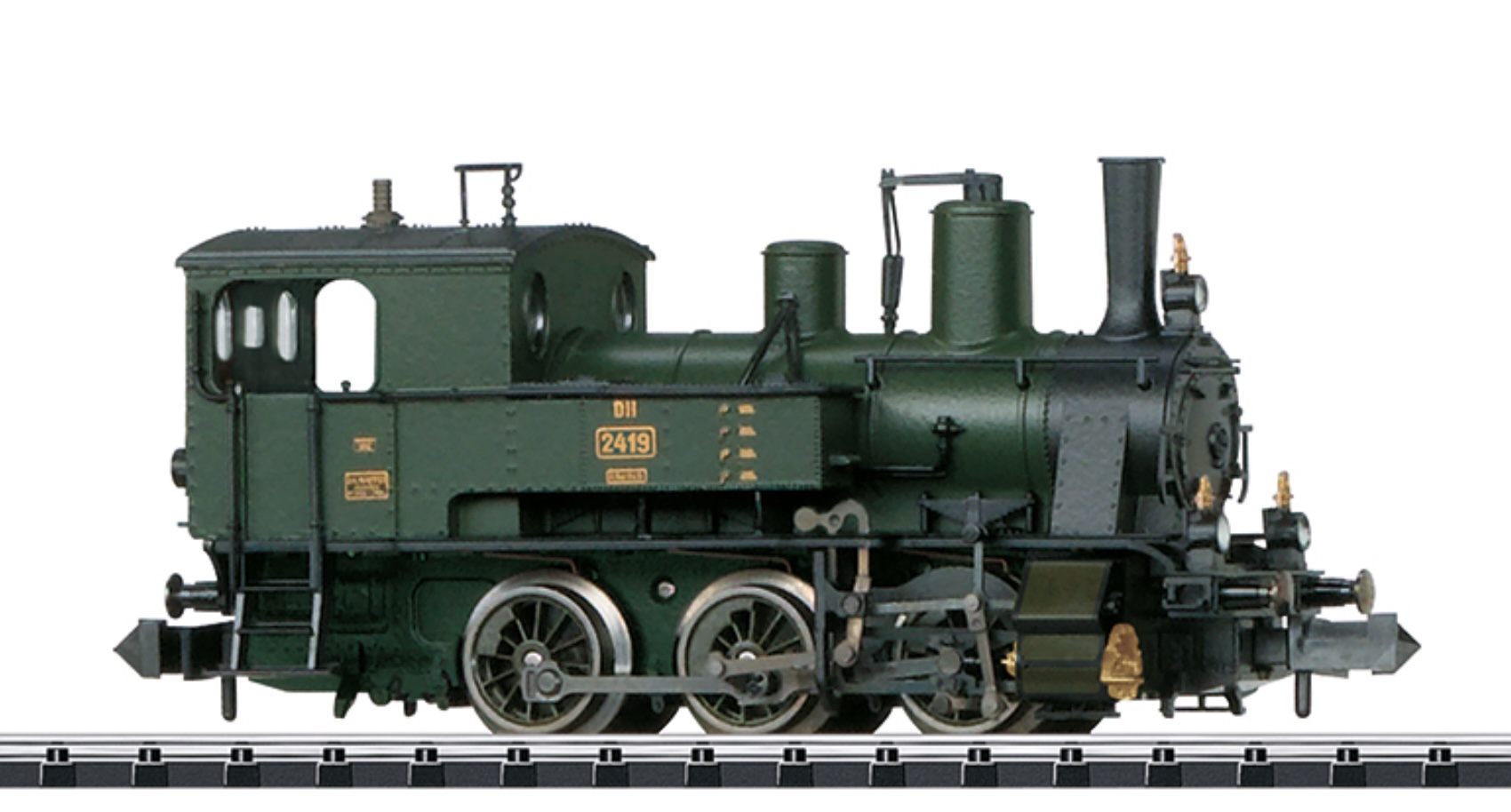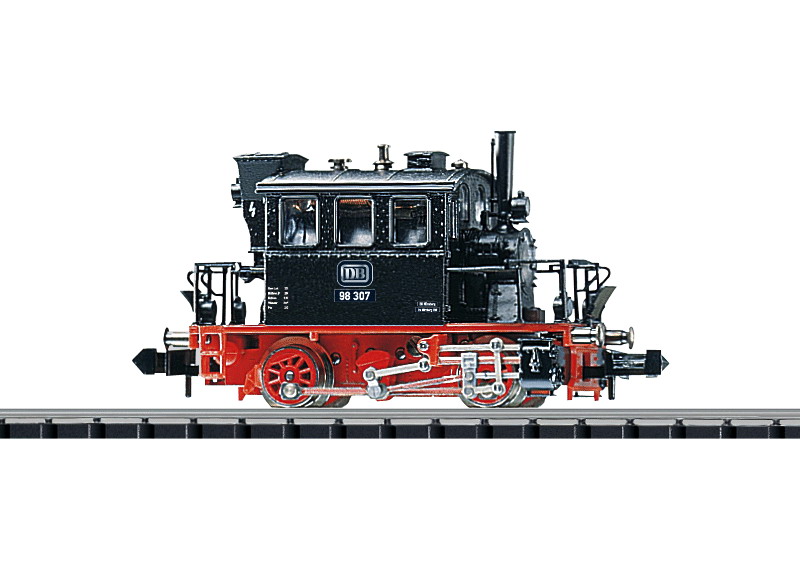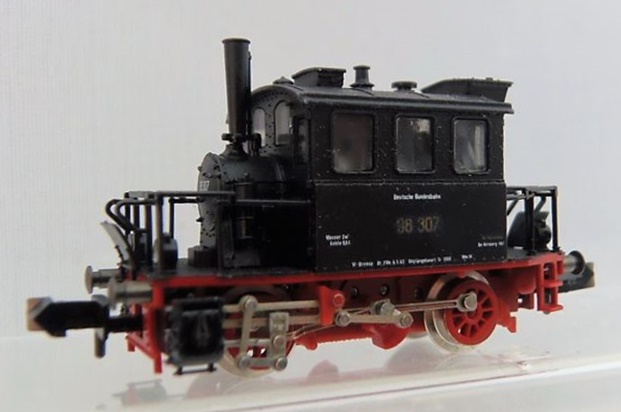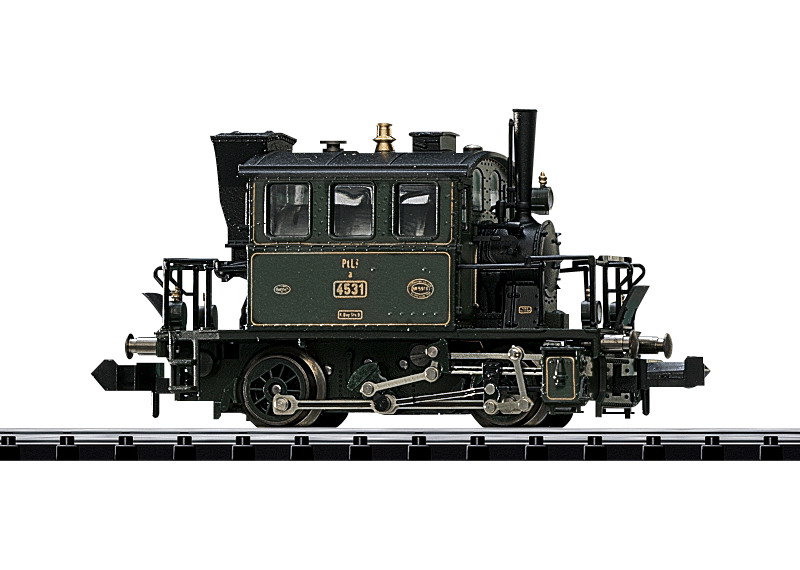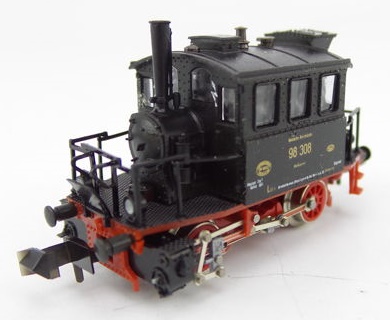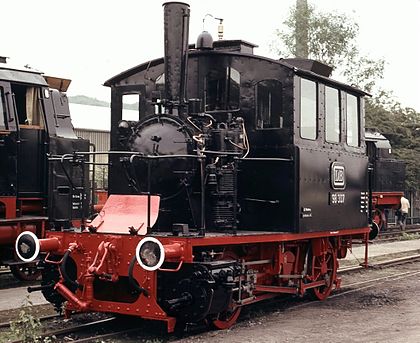Minitrix - 12011 - Locomotive, Steam, 0-4-0, Tank PtL 2/2 - ÖBB (Austrian Federal Railways) - 688.01
| Stock Number | 12011 |
| Brand | Minitrix |
| Manufacturer | Minitrix |
| Body Style | Minitrix Steam Engine BR 98.3 - PtL 2/2 |
| Prototype Vehicle | Locomotive, Steam, 0-4-0, Tank PtL 2/2 (Details) |
| Road or Company Name | ÖBB (Austrian Federal Railways) (Details) |
| Reporting Marks | ÖBB |
| Road or Reporting Number | 688.01 |
| Paint Color(s) | Black |
| Print Color(s) | White |
| Coupler Type | Rapido Hook |
| Wheel Type | Chemically Blackened Metal |
| Wheel Profile | Small Flange (Low Profile) |
| DCC Readiness | No |
| Release Date | 1987-01-01 |
| Item Category | Locomotives |
| Model Type | Steam |
| Model Subtype | 0-4-0 |
| Model Variety | BR 98.3 - PtL 2/2 |
| Prototype Region | Europe |
| Prototype Era | EU Epoch I (1870 - 1920) |
| Scale | 1/160 |
Model Information:
Model of the 1908–1914 version of the Bavarian PtL 2/2.
Introduced in 1986 and re-run several times.
This model is only 45 mm long!
Introduced in 1986 and re-run several times.
This model is only 45 mm long!
DCC Information:
Later models are DCC (Selectrix) factory-equipped.
Prototype History:
The Class PtL 2/2 locomotives of the Royal Bavarian State Railways (Königlich Bayerische Staatseisenbahn) were light and very compact superheated steam locomotives for operation on Bavarian branch lines (known generally as Lokalbahnen). There were three types in total, of which two were transferred to the Deutsche Reichsbahn-Gesellschaft as Class 98.3 tank locomotives and even survived to join the Deutsche Bundesbahn fleet after the Second World War.
Common to all the variants was the B axle arrangement (European or UIC classification) or 0-4-0 (Whyte notation), the semi-automatic, gravity-feed firing that enabled one-man operation, and platforms with guard rails, front and rear, that enabled safe access to the coaches. The locomotives had a large driver's cab with 3 windows per side that surrounded the entire locomotive boiler as far as the smokebox. This unique feature earned it the nickname Glaskasten ("glass box").
Common to all the variants was the B axle arrangement (European or UIC classification) or 0-4-0 (Whyte notation), the semi-automatic, gravity-feed firing that enabled one-man operation, and platforms with guard rails, front and rear, that enabled safe access to the coaches. The locomotives had a large driver's cab with 3 windows per side that surrounded the entire locomotive boiler as far as the smokebox. This unique feature earned it the nickname Glaskasten ("glass box").
Road Name History:
 The Austrian Federal Railways (German: Österreichische Bundesbahnen or ÖBB, formerly the Bundesbahn Österreich or BBÖ) is the national railway system of Austria, and the administrator of Liechtenstein's railways. The ÖBB group is owned entirely by the Republic of Austria and is divided into several separate businesses that manage the infrastructure and operate passenger and freight services.
The Austrian Federal Railways (German: Österreichische Bundesbahnen or ÖBB, formerly the Bundesbahn Österreich or BBÖ) is the national railway system of Austria, and the administrator of Liechtenstein's railways. The ÖBB group is owned entirely by the Republic of Austria and is divided into several separate businesses that manage the infrastructure and operate passenger and freight services.
The Austrian Federal Railways has had two discrete periods of existence. It was first formed in 1923, using the Bundesbahn Österreich name, as a successor to the Imperial Royal Austrian State Railways (kkStB), but was incorporated into the Deutsche Reichsbahn during the 1938-1945 Anschluss. It was reformed in 1947, using the slightly different Österreichische Bundesbahnen name, and remains in existence in this form.
Major changes currently being made to the Austrian railway network are the construction of the Wien Hauptbahnhof (Vienna main station), the Koralm Railway, the Semmering Base Tunnel and the Brenner Base Tunnel connection with Italy.
From Wikipedia

The Austrian Federal Railways has had two discrete periods of existence. It was first formed in 1923, using the Bundesbahn Österreich name, as a successor to the Imperial Royal Austrian State Railways (kkStB), but was incorporated into the Deutsche Reichsbahn during the 1938-1945 Anschluss. It was reformed in 1947, using the slightly different Österreichische Bundesbahnen name, and remains in existence in this form.
Major changes currently being made to the Austrian railway network are the construction of the Wien Hauptbahnhof (Vienna main station), the Koralm Railway, the Semmering Base Tunnel and the Brenner Base Tunnel connection with Italy.
From Wikipedia
Brand/Importer Information:
Trix is a German company that originally made Trix metal construction sets. one of its co-founders was Stephan Bing, the son of the pioneer toy-maker industrialist Ignaz Bing. In 1935 the company began producing the electrically powered model trains that it became famous for, under the Trix Express label. Prior to the outbreak of World War II the Trix company produced a small range of fairly unrealistic AC powered three rail models running at 14 volts.
N gauge models under the Minitrix brand were made from the late 1960s mostly of European prototypes (German and British primarily). North American prototypes were also manufactured and marketed under the Aurora "Postage Stamp" brand; later these items were sold under the American Tortoise, Model Power and Con-Cor brands. Trix sometimes utilized North American consultants to aid in the design of this portion of the product line. The "Hornby Minitrix' brand was used in the 1980s for a short lived range of British outline models using the earlier product tooling.
Trix's owner in the 1980s and 1990s was Mangold, which went bankrupt in the late 1990s and Märklin purchased the assets in January 1997. In part, this purchase was a reflection of Märklin's need for added production capacity; Trix had been manufacturing certain items for Märklin in previous years. The purchase was also in response to the earlier purchase of the Karl Arnold company by the Italian company Rivarossi; Märklin were very keen to take over Trix market share in 2-rail H0 and especially Minitrix, until then Märklin had not marketed N gauge models. In 2003, Märklin introduced its first N gauge models under the well established Minitrix brand. A number Märklin H0 scale three-rail AC locomotives have also been introduced in two-rail DC versions under the Trix logo and many models are shared between the two brands.
From Wikipedia
N gauge models under the Minitrix brand were made from the late 1960s mostly of European prototypes (German and British primarily). North American prototypes were also manufactured and marketed under the Aurora "Postage Stamp" brand; later these items were sold under the American Tortoise, Model Power and Con-Cor brands. Trix sometimes utilized North American consultants to aid in the design of this portion of the product line. The "Hornby Minitrix' brand was used in the 1980s for a short lived range of British outline models using the earlier product tooling.
Trix's owner in the 1980s and 1990s was Mangold, which went bankrupt in the late 1990s and Märklin purchased the assets in January 1997. In part, this purchase was a reflection of Märklin's need for added production capacity; Trix had been manufacturing certain items for Märklin in previous years. The purchase was also in response to the earlier purchase of the Karl Arnold company by the Italian company Rivarossi; Märklin were very keen to take over Trix market share in 2-rail H0 and especially Minitrix, until then Märklin had not marketed N gauge models. In 2003, Märklin introduced its first N gauge models under the well established Minitrix brand. A number Märklin H0 scale three-rail AC locomotives have also been introduced in two-rail DC versions under the Trix logo and many models are shared between the two brands.
From Wikipedia
Item created by: Alain LM
on 2020-05-19 13:29:01
If you see errors or missing data in this entry, please feel free to log in and edit it. Anyone with a Gmail account can log in instantly.
If you see errors or missing data in this entry, please feel free to log in and edit it. Anyone with a Gmail account can log in instantly.


